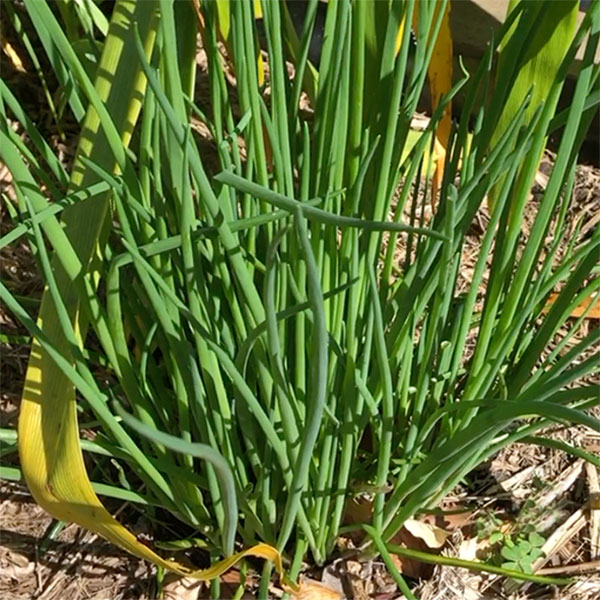
Growing Chives in the Garden
(Allium schoenoprasum and allium tuberosum)
Chives come in two varieties, common and garlic. Both are best planted in late winter to early spring depending on your climate zone. Easy to grow from seed or seedling transplant, they are a useful plant for the kitchen garden. Chives used widely in a range of dishes from salads to omelettes and other savoury dishes.
They add a slight garlic to onion flavour depending on the variety, however nothing overpowering. You can also use them soups, and they are a must for potato salads.
In this article we are talking about both common Chives (allium schoenosparum) and Garlic Chives ( allium tuberosum)
Top Tips
- Plant in full sun in the garden or in a container.
- Use a humus rich growing medium. Add some well rotted compost and aged cow manure before planting.
- Grow chives from seeds sown in late winter or by dividing and transplanting larger clumps.
- Keep chive moist and fertilise regularly with a liquid seaweed fertiliser for best production.
- They are easily grown from seedlings available for sale from most nurseries, or from seeds purchased online.
- If you are looking at propagating chive from seed there are a few simple rules.
Propagating Chives
Chives grow equally well in containers and the vegetable garden, we find them most useful in a pot close to the kitchen where it is easy to ‘cut what you need’ as you need them.
A humus rich moist soil is best, and full sun to a little afternoon shade will suit chives beautifully. In deeper shade chives will still grow well although will not be as vigorous, they will not flower but are still great for cutting.
How to grow Chives from Seed.
One of the beauties of these herbs is that they grow well from seed, and like many members of the allium family will in fact self seed.
We have found that by planting in a largish container and keeping moist in summer that we have an endless supply. We do tend to let some of the clump flower and ‘go to seed’ each year. We do not collect the seed, we just let it fall into the pot.
These are a perennial and will die right back in winter to re shoot in spring, it is in winter that you can divide older and larger clumps to improve vigour and create larger clumps is required.
- Sow the seeds in a tray indoors in cooler climates.
- Plant the seedlings out once they have reached around 5 cm (2 inches) in height.
- Choose a humus rich well drained soil and a sunny position.
- Keep the soil moist, however chives are remarkably hardy once established.
- Over time, they will form a dense clump so if growing in containers choose one that is fairly large. They will need to be divided. This is best done in late winter to spring.
Chives do have small bulbs and they can be planted at around 8cm (3 inches) apart, however we tend to plant them in clumps of 4 -5 at around 10 12 cms (4 – 5 inches) apart.
Growing in Pots
Easily be grown in pots, they do require a moist open potting mix and actually seem to resent strong fertiliser. You will need to repot them every 3 – 4 years to maintain vigour, use a good quality potting mix with some extra compost mixed through.
Fertilizer
We use a liquid organic seaweed fertiliser in spring and again in early summer. Remember that you are eating these plants, so if snails are a problem (doubtful) surround the plants with grit, certainly stay away from any snail bait or chemicals.
Harvesting
Simply use kitchen scissors to cut the fresh green shoots as needed. Wash well before using and you will find that your home grown chives will reward you with a fresh flavour in a range of dishes.
More Information
- If you like herbs and are looking for one of the best value varieties to grow then Chives are with considering.
- They don’t take up much space, are easy to grow, can be grown in containers and you can cut them and they will regrow.
- They are a perennial clump forming plant, chives will dry right back in the cooler months, however try growing them in a container in a warm position inside for a longer lasting supply. In the warmer areas chives may last nearly all year.
- In the garden they are well behaved and attract beneficial insects and pollinators such as bees. They also have attractive flowers in summer, which can also be eaten.
- With cylindrical grass like leaves, chives are a widely grown herb related to garlic and onions.
- Chives can be regularly cut, and flowers need to be removed to ensure an ongoing supply of the green foliage which in the part used in salads and cooking.
Chives as Companion Plants
As companion plants they grow well with carrots, tomatoes, mustard greens, or cabbage. They can also be grown beneath roses.
Chive plants are available for sale online from the following nurseries
Little Hampton, Vic 345
"Mail order nursery specialising in cottage garden perennials, flowering shrubs, Trilliums, Hostas and Pacific Coast Iris. Flat rate express postage - Except WA & TAS"
www.botanicaltreasures.com

